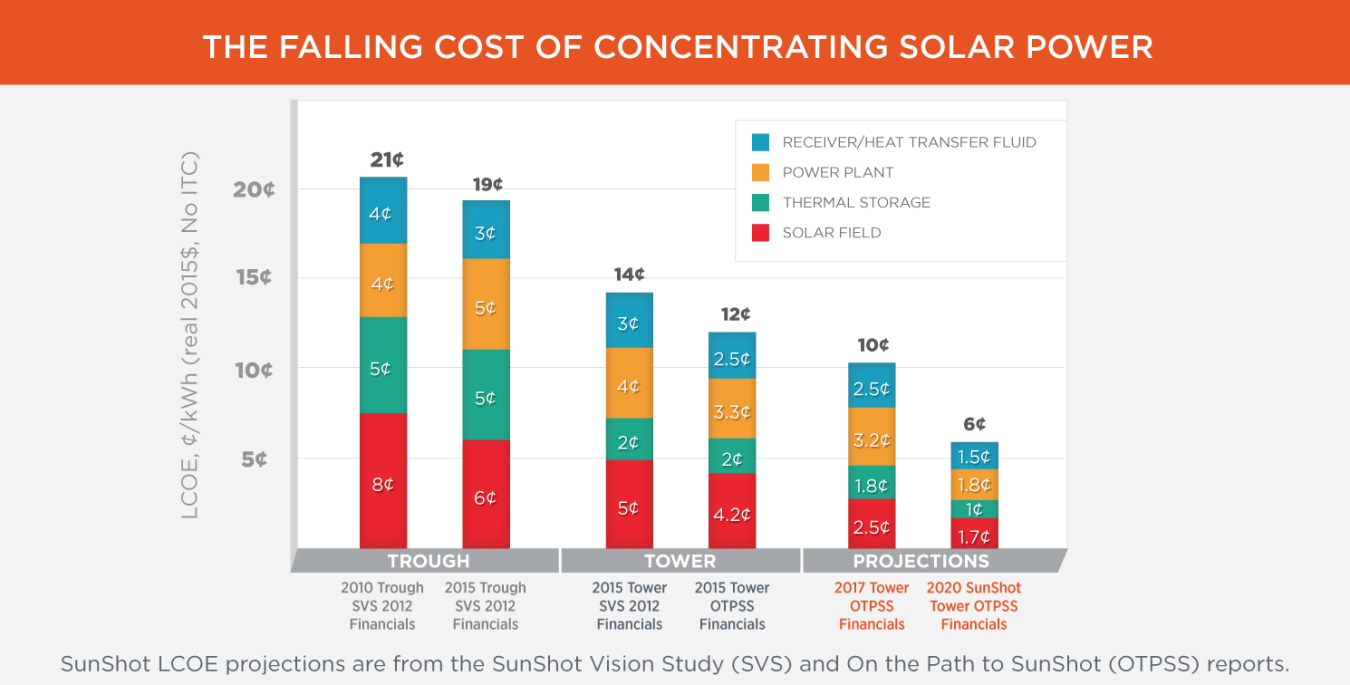Energy storage will help enable CSP compete by adding flexibility value to a high-variable-generation (solar plus wind) power system (see Mehos et al. 2016). Compared with PV, CSP systems are more complex to develop, design, construct, and operate, and...
Solar Energy Technologies Office
May 13, 2016
Energy storage will help enable CSP compete by adding flexibility value to a high-variable-generation (solar plus wind) power system (see Mehos et al. 2016). Compared with PV, CSP systems are more complex to develop, design, construct, and operate, and they require a much larger minimum effective scale—typically at least 50 MW, compared with PV systems that can be as small as a few kilowatts. In recent years, PV’s greater modularity and lower LCOE have made it more attractive to many solar project developers, and some large projects that were originally planned for CSP have switched to PV. However, the ability of CSP to use thermal energy storage—and thus provide continuous power for long periods when the sun is not shining—could give CSP a vital role in evolving electricity systems. Because CSP with storage can store energy when net demand is low and release that energy when demand is high, it increases the electricity system’s ability to balance supply and demand over multiple time scales. Such flexibility becomes increasingly important as more variable-generation renewable energy is added to the system. For example, one analysis suggests that, under a 40% renewable portfolio standard in California, CSP with storage could provide more than twice as much value to the electricity system as variable-generation PV. For this reason, enhanced thermal energy storage is a critical component of the SunShot Initiative’s 2020 CSP technology-improvement roadmap.
Download the full report and learn more about all eight reports.

